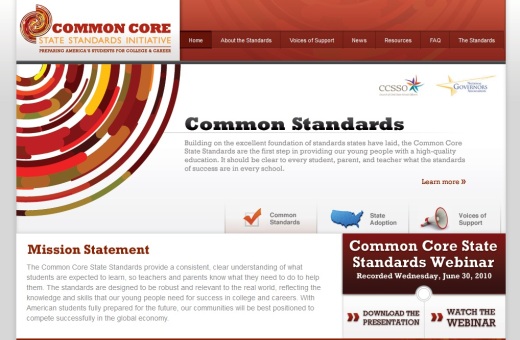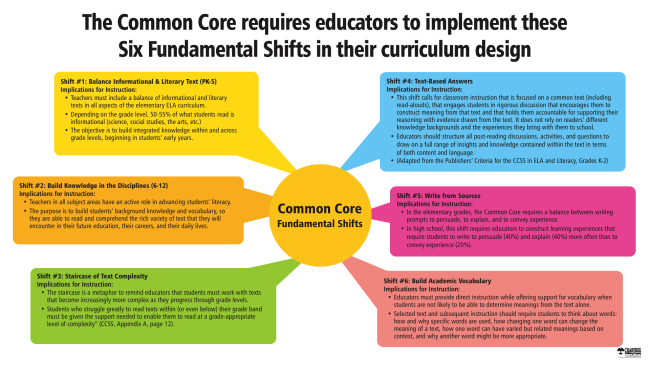FIRST THOUGHTS
As an educational technology coordinator for a high school district, having an awareness of how instruction is delivered and student learning is assessed and made visible is important. I enjoy reading about and watching videos/webinars on current pedagogical thinking and instructional methodology. I enjoy the conversations I have with administrators and teachers and informally observing what goes on in classrooms. During my eight years of teaching in the classroom and my subsequent work as a technology consultant/coordinator, I have actively used technology in teaching and learning and enjoyed sharing that passion with others.
About five years ago, a shift took place for me. I discovered RSS feeds and Twitter. Those blog posts where educators shared their learning and conversations on Twitter, along with online webinars, became my source of professional development and growth as an educator. I began to learn the power of shared learning and collaboration. Through my connections with digital learning, I also uncovered the growing Web 2.0/21st Century Learning paradigm in education. I began to understand that the growing access to new technologies and online tools needed to make its way into classrooms. I saw some embrace it, while others ignored or put off leveraging it in teaching and learning. In spite of how standardized testing had affected teaching and learning in schools, I had hope that this new paradigm would help teachers engage students in new ways that would encourage more engaging, student-centered learning. Now, with the advent of the Common Core State Standards (CCSS) initiative, there is an additional impetus to implement digital learning in classrooms. (For a basic introduction, see this short 3 minute video: “Explaining the Common Core Standards”).

Creative Commons License – The Partnership for 21st Century Learning (http://www.p21.org/)
Okay, I know…just because a new initiative is being thrust upon us doesn’t mean teachers are going to engage it. They weren’t involved in the conversation when the new standards were developed. The state didn’t ask for their opinion before quickly adopting them. And the CCSS also brings with it another learning curve for another initiative that raises questions like, “How long will this one be around?”, “Will this really help students be better learners or better prepared for college and careers?”, “How much time and energy is this going to take?”, “Is this going to be driven by the administration, or will be have some voice in the planning, professional development, implementation, and assessment of teaching/learning using these standards?”
With this transition to an initiative that will probably be here from some time, my hope is that administrators will take the time to engage teachers in an ongoing conversation about the structure/process and provide meaningful professional development and structures for ALL teachers to be involved in supportive, collaborative environments (Ex. PLC groups). My fear is that they will rush into it without a solid plan, and the implementation and growth will be inconsistent and teachers who have resisted the 21st Century paradigm and engaging students with instructional models like Project-Based Learning (PBL) and utilizing online apps will resist this, as well.
MY INTRO TO INSTRUCTIONAL DESIGN (CCSS STYLE) & IMPLICATIONS
A few weeks ago, I had a chance to attend a training called, “Systems of Instructional Design – Developing College and Career Ready Students” presented by Jay Westover, an education consultant with Innovate Ed., This training targeted building an understanding of instructional design in the context of the CCS, which I found to be helpful. I became familiar with some areas the Common Core emphasizes and was introduced to some key terms/concepts like Literacy, Depth of Knowledge, Instructional Rounds, Literacies across Disciplines, Text Complexity (the Staircase of Complexity), Text-based Answers, etc. In addition, the Areas of Emphasis were illustrated through the day. There were several things that stood out for me.
One of the first points made in the training was that the standards are NOT the curriculum or instruction. “A Standard is an outcome, not a claim about how to achieve an outcome.” (McTighe and Wiggins, 2012). In their article, “From Common Core Standards to Curriculum: Five Big Ideas”, McTighe and Wiggins state, “It is imperative that educators understand the intent and structure of the Standards in order to work with them most effectively. Accordingly, we recommend that schools set the expectation and schedule the time for staff to read and discuss the Standards, beginning with the “front matter,” not the grade-level Standards. We also recommend that staff reading and discussion be guided by an essential question: What are the new distinctions in these Standards and what do they mean for our practice?”
“To invoke a construction analogy: Think of the grade level standards as building materials. As a construction supervisor, we wouldn’t simply drop off materials and tools at a worksite and have the workers “go at it.” Instead, we would begin with a blueprint – an overall vision of the desired building to guide its construction. Without an overall end in mind, teachers can create wonderful individual rooms that won’t necessarily fit together within and across floors or achieve the intended results.”
THE SIX CCSS CURRICULUM SHIFTS
One thing I appreciate about the CCS is the attempt to replace the “mile wide, one inch deep” approach to outcomes that emphasize greater “depth of knowledge” (D.O.K.). To get students to learn beyond the first level of D.O.K. (recall of information) which was the outcome emphasized in the previous standards and testing regime, teachers will have to make six shifts in their Instructional Design (see illustration below). Many teachers are doing some of these “shifts” to various degrees, but now they will have to make these shifts with greater intentionality and make them more visible to others. Fortunately, because the CCS are a nationwide initiative, there are lots of available resources being developed and shared online. But even with that, what kinds of digital textbooks and other reading material will have to draw from is still up in the air.
TEACHER CONCERNS
How are teachers feeling about their level of preparedness to implement the new standards? Below is an infographic from a small sample of teachers that provides a snapshot of what I suspect teachers are thinking around the country (our rural county would probably show lower numbers that feel “somewhat” prepared). The concerns listed, I think, could be a foundation for conversations that administrators and teachers need to be engaging in.

Click image for original blog post, “What Teachers Really Think About the Common Core” on Weareteachers.com
One last thought for my first glance at the CCS. One interesting thing about the training I went to on Instructional Design was that there was almost no mention of technology use. No mention of how teachers could leverage the Internet and digital tools as part of their instructional design research, planning, or delivery. No mention of how students could collaborate using digital tools. No mention of the skills students will need to take the Smarter Balanced assessments. I just found that very odd. Technology integration is a key piece that every school has to consider. Schools will need a robust infrastructure and bandwidth, hardware for teachers and students to access, digital content resources, an idea of the digital literacies teachers and students will need, professional development, and the finances to support the school’s educational technology.
That’s my first glance at the Common Core Standards. I’m trying to read something each week to help develop a greater understanding of where we are going with them. In this post, I haven’t tried to delve into issues of equity for all students, the Smarter Balanced assessments, how corporate America has been involved in driving the Common Core Standards Initiative, or other issues that will impact our efforts to provide great teaching and learning in our schools. I’m sure I’ll have something more to say about those issues, but for now, my focus will be on how I can assist our district in the planning and implementation of what we have right now. I hope you will guard your focus, as well.



